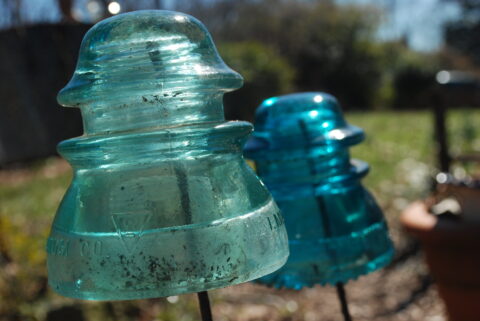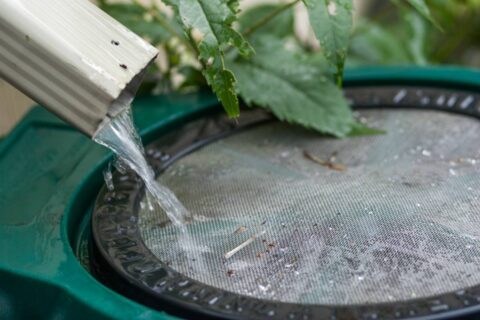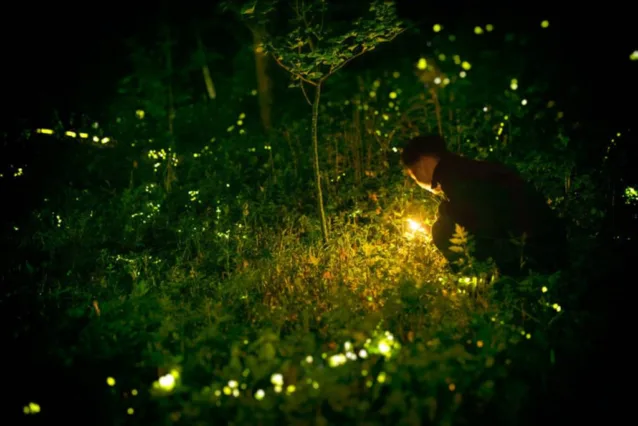 What if bottles, bags, and other plastic products could be made from biodegradable materials?
What if bottles, bags, and other plastic products could be made from biodegradable materials?
Oh, wait, they can be!
Have you heard of biodegradable plastic products made from a substance called PLA?
PLA (polylactic acid) is a resin that is mostly made from — you better believe it — corn. (Although it can be made from other starchy sources such as potatoes.)
As Elizabeth Royte from the Smithsonian Magazine puts it, “[This is] an industrial resin poised to become — if you can believe all the hype — the future of plastic in a post-petroleum world”.
That said, are PLA products safe? Are they really biodegradable? Do they really save energy and money?
Here’s what you need to know…
I first came across PLA products in a local health food store where I saw this sports bottle, complete with its own filter, from New Wave Enviro (pictured above).
I’ve done some research over the past couple of days and have found some interesting information.
Pro’s of PLA Plastics
From IdealBite.com:

“Corn-based plastic doesn’t emit toxic fumes when incinerated, and requires 20-50% less fossil fuel to make as compared to regular plastics.”

An affordable alternative. Corn-based straws or cups won’t break the bank. (The above-mentioned Smithsonian Magazine article reports that in 1989 it cost $200 to make one pound of PLA, now it cost $1.)

Fully biodegradable within 40-80 days, but [and I guess this would kind of fall under the coming “Con’s” section] you can’t just throw it on your backyard’s compost pile. To decompose, PLA plastic requires a temperature of up to 284 degrees.
Con’s of PLA Plastics
From SmithsonianMagazine.com:
 “Corn plastic is technically biodegradable. But in reality very few consumers have access to the sort of composting facilities that can make that happen. NatureWorks (the largest lactic acid plant in the world) has identified 113 such facilities nationwide — only about a quarter of them accept residential recyclables.”
“Corn plastic is technically biodegradable. But in reality very few consumers have access to the sort of composting facilities that can make that happen. NatureWorks (the largest lactic acid plant in the world) has identified 113 such facilities nationwide — only about a quarter of them accept residential recyclables.”
 Then there’s the moral issue: “Lester Brown, president of the Earth Policy Institute, questions the morality of turning a foodstuff into packaging when so many people in the world are hungry. ‘Already we’re converting 12% of the U.S. grain harvest to ethanol, how much corn do we want to convert to nonfood products?'” Good question.
Then there’s the moral issue: “Lester Brown, president of the Earth Policy Institute, questions the morality of turning a foodstuff into packaging when so many people in the world are hungry. ‘Already we’re converting 12% of the U.S. grain harvest to ethanol, how much corn do we want to convert to nonfood products?'” Good question.
From LetsRecycle.com:

“If PLA plastic bottles end up among other recyclable forms of plastic, they can damage the resulting product. You don’t need much PLA to mess PET up, especially if you want to recycle it back into a bottle. It will only take a few percent.”
 The last con we’ll address here is the no-brainer for many of us. The rule goes, “if at all possible, don’t use any plastics, period. And yeah, that goes for biodegradable ones too.” That said, New Wave Enviro has some sweet looking (and pocket book friendly) stainless steel water bottles in an array of sizes.
The last con we’ll address here is the no-brainer for many of us. The rule goes, “if at all possible, don’t use any plastics, period. And yeah, that goes for biodegradable ones too.” That said, New Wave Enviro has some sweet looking (and pocket book friendly) stainless steel water bottles in an array of sizes.
So what do you think?
Knowing how terrible traditional plastic bottles and products are for both the environment and our health, as frequently noted here at The Fun Times Guide to Living Green, would you consider a biodegradable plastic bottle made from PLA?
Would you abandon plastics altogether and give stainless steel a shot?
I think every little step toward living green is an awesome one… but eco-snobbery sucks! My goal is to help newbies learn the most important steps toward living green — individually and collectively. Personally, I strive to have as little impact as possible on Planet Earth while I'm here.






